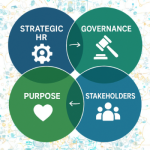Diversity, equity, inclusion, and cultural safety (beyond “the talk”)
There is no one-size-fits-all approach to diversity, equity, inclusion, and cultural safety. Each organisation operates in its own context, with its own people, history, and community relationships. But one truth is unavoidable, surface-level initiatives are no longer enough.
Statements, workshops, or token gestures may look like progress, but they rarely shift power or culture. To move beyond “the talk”, not-for-profits need to embed DEI in strategy, governance, their theory of change, and practice. That includes creating safe, equitable environments for neurodivergent colleagues.
Why a strategy matters
Too many organisations approach DEI through isolated actions, a workshop here, a policy update there. The problem is, without an overarching strategy, efforts don’t stick.
A robust DEI strategy provides:
+Clarity, what DEI means for your purpose and community.
+Priorities, which issues are most urgent, whether cultural safety, gender equity, accessibility, or intersectionality.
+Accountability, who is responsible for action, at Board, leadership, and operational levels.
+Measurement, how you will track and report progress.
The new Workplace Sexual Harassment laws under the Secure Jobs, Better Pay reforms illustrate why such a strategy matters. The law creates a positive duty to prevent harassment and discrimination. A DEI strategy is one of the most effective ways to meet this duty, because it integrates compliance into a broader cultural commitment.
Doing it right: the key elements
+Cultural safety embedded. Safe environments are those where First Nations staff and communities feel heard, respected, and empowered to shape decisions. That often means shifting whose voices areprivileged, who sits on the Board, and who holds influence.
+Governance built for equity. Leading NFPs ask hard questions about who sits at the table. Structural racism, gender imbalance, and exclusion at governance level cannot be solved by frontline staff training alone. Boards must lead by example and be aware of both conscious and unconscious biases.
+Neurodiversity embraced. Neurodivergent colleagues bring unique strengths, problem-solving, creativity, and innovation, yet often face barriers at work. Neurodivergence is not deficit, it is difference. Small adjustments can make big differences:
-Clear, direct instructions, with time to process.
-Flexible work options, consistent routines, and advance notice of changes.
-Quiet spaces, noise-cancelling tools, or choice of desk location.
-Psychological safety so staff can disclose needs without fear. Embedding these into a DEI strategy ensures neurodivergence is not left to ad-hoc fixes but treated as a core part of inclusion.
+Justice and accessibility at the core. Pay equity, secure work, flexible roles, and accessible workplaces are central to inclusion. This is more than compliance, it is how NFPs live their values of fairness. Ask yourself, does your pay, reward, and recognition system truly reflect an inclusive and just organisation?
+Metrics that matter. Metrics are not a cure-all, but compelling measures drive accountability:
-Representation, whether the workforce and Board reflect what is espoused
-Experience, how safe and valued people feel, measured through surveys and cultural safety reviews.
-Outcomes, who benefits from services, funding, or partnerships.
Where to start
Avoid the temptation to run a single training day or celebrate one cultural calendar event. For NFPs ready to move from intent to action:
+Develop a DEI strategy co-designed with staff and stakeholders, linking directly to purpose. At minimum, ensure DEI is a pillar in your strategic plan and flows into your theory of change.
+Audit policies and culture, recruitment, pay, governance, and service design.
+Prioritise neurodivergence by adopting practical steps from best practice, such as consistent routines, sensory-aware environments, and tailored support plans.
+Design the employee lifecycle with inclusivity in mind, from recruitment to exit, using design thinking rather than bolt-on solutions.
+Measure and report progress openly, even when results are imperfect.
The payoff
Doing DEI and cultural safety right is not easy. It means confronting inequities, redesigning systems, and redistributing power. But organisations that commit see the rewards: trust, legitimacy, and deeper impact. Beyond the talk, the organisations that gain the strategic advantage of diversity will be those that treat DEI not as a project, but as a core strategy, woven into governance, workforce, and community. The future belongs to those willing to walk this road with honesty and persistence.








